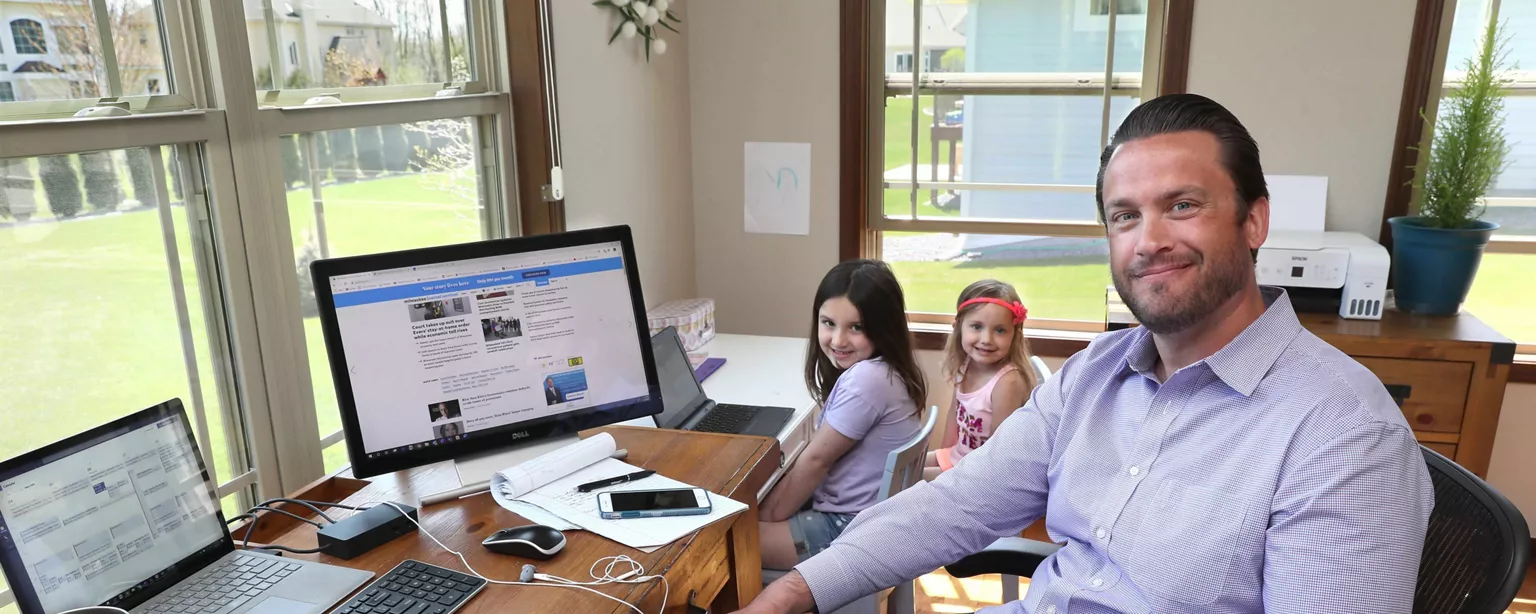Life hasn’t returned to normal since the start of the COVID-19 pandemic, and the demands of parenting keep shifting during these complicated times. Supporting students who are returning to school requires a bit of adjustment, especially when added to balancing an already demanding professional life. Here’s a look at how some Robert Half employees are managing this challenging task:
Tackling logistics
“Oh, wow, where do I begin?” asked Marisa Ellis, regional manager and 15-year veteran at Robert Half, who has two children, Charlotte, 8, and Kennedy, 4. “Now, that the children have returned to school, my husband and I stagger drop-offs and pick-ups. Clubs and after-school activities have been eliminated, so we figure out in advance which meetings to attend or skip, and find activities that each child can do between 2:30 and 5:30 p.m. We are definitely surviving, but it doesn’t always feel like thriving.”
Nina Moore, product manager for digital workplace CONNECT management, has four children. Marina, 13, Sarah, 10, and her twins Gavin and Aiden, 7, each have different and competing schedules, needs and technology challenges. “We had to upgrade our Wi-Fi with six people working from home,” Moore said. “There were a lot of tears around dropped calls; then the Wi-Fi wouldn’t work with the school laptops – we’re still sorting that out.”
“Everyone was scrambling to figure out what we were doing at first,” said regional manager Jim Jeffers, who’s been with Robert Half for five years and is the father of Aubrey, 7, and Amelia, 4. “Then we had to teach our two girls at home, and my wife and I both work; it was a difficult time for us.”
Planning schedules in advance has become central to those juggling disruptions. District director Megan Slabinski, a 21-year Robert Half employee and mother to Henry, 11, and Carter, 8, agrees. “I use 6 to 7 a.m. to answer emails. I can then block off lunch to help the kids with technical issues, make everyone something to eat and take a short walk to get our bodies moving,” she said. “We also block time for family dinner, games or watching a show together, rather than everyone disappearing to their rooms with their own devices.”
"My day always evolves into something different; however, I try to keep a consistent schedule around work, school and mealtimes," recruiting manager Erica Thomas of Robert Half Technology said. This 6-year employee and mother of three — Lucas, 15, Will, 4, and Rico, 5 months — splits the day and her family responsibilities with her husband to meet her clients' and candidates' needs. "For example, when I schedule interviews, I offer either 11 a.m. or 2 p.m., because I know my husband is available to help or the kids are napping. That gives me more flexibility to do my recruiting, emails, log activities and planning."
Pin Zook, HR program manager and mother of two, Bryce, 7, and Colton, 3, and Muneet Chohan, manager of talent acquisition and mom to 4-and-a-half-year-old twins Zaver and Avani, also find evenings to be productive times for catching up or working on larger projects. "Outside of our daily schedule, I find myself more productive when the kids are in bed," Zook said.
"Once the kids are in bed, I use that time for any work that doesn't require real-time responses," Chohan added. However, she emphasized that with preschool back open and her parents available to help when the kids aren't in school, things are feeling closer to normal.








